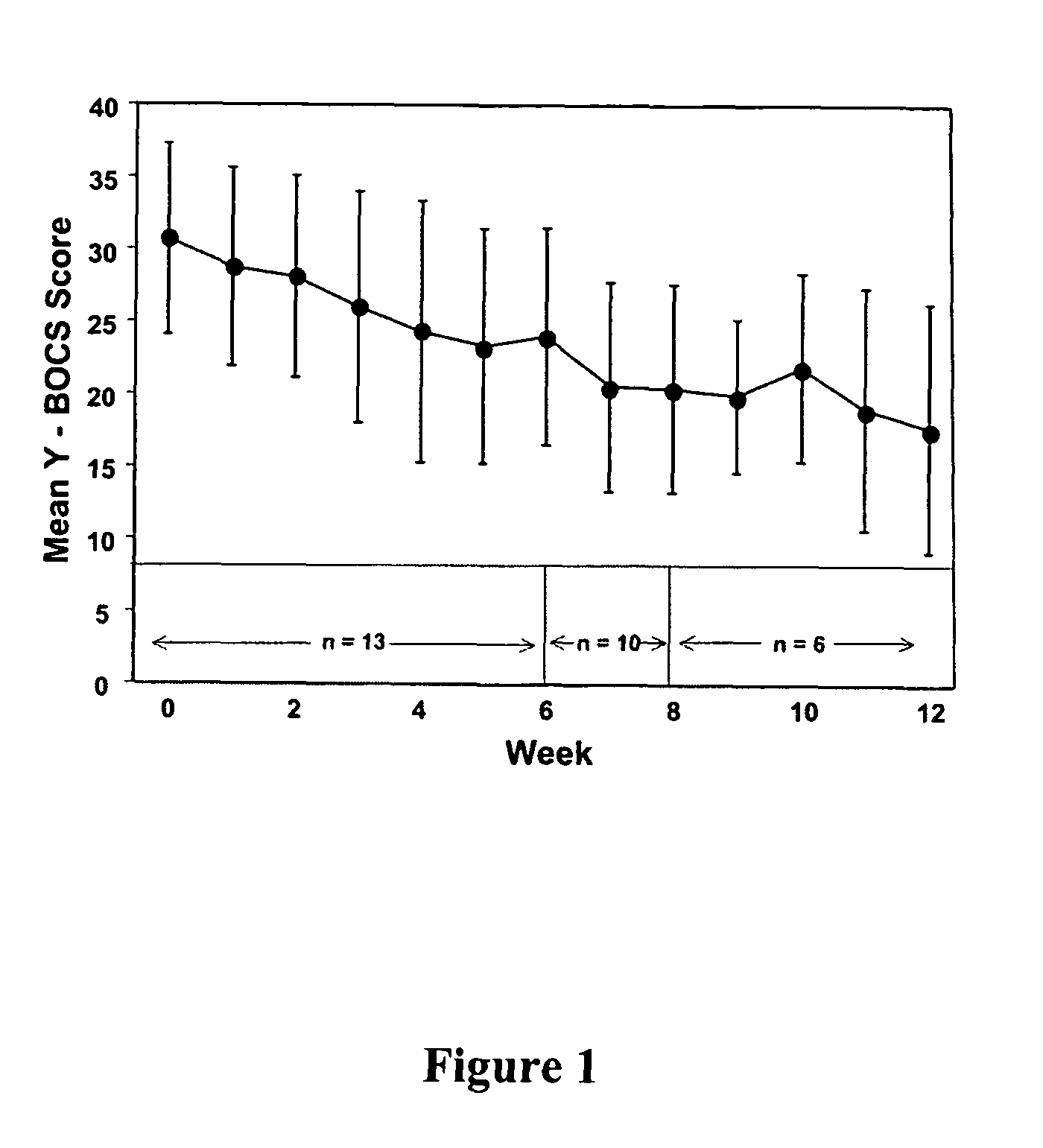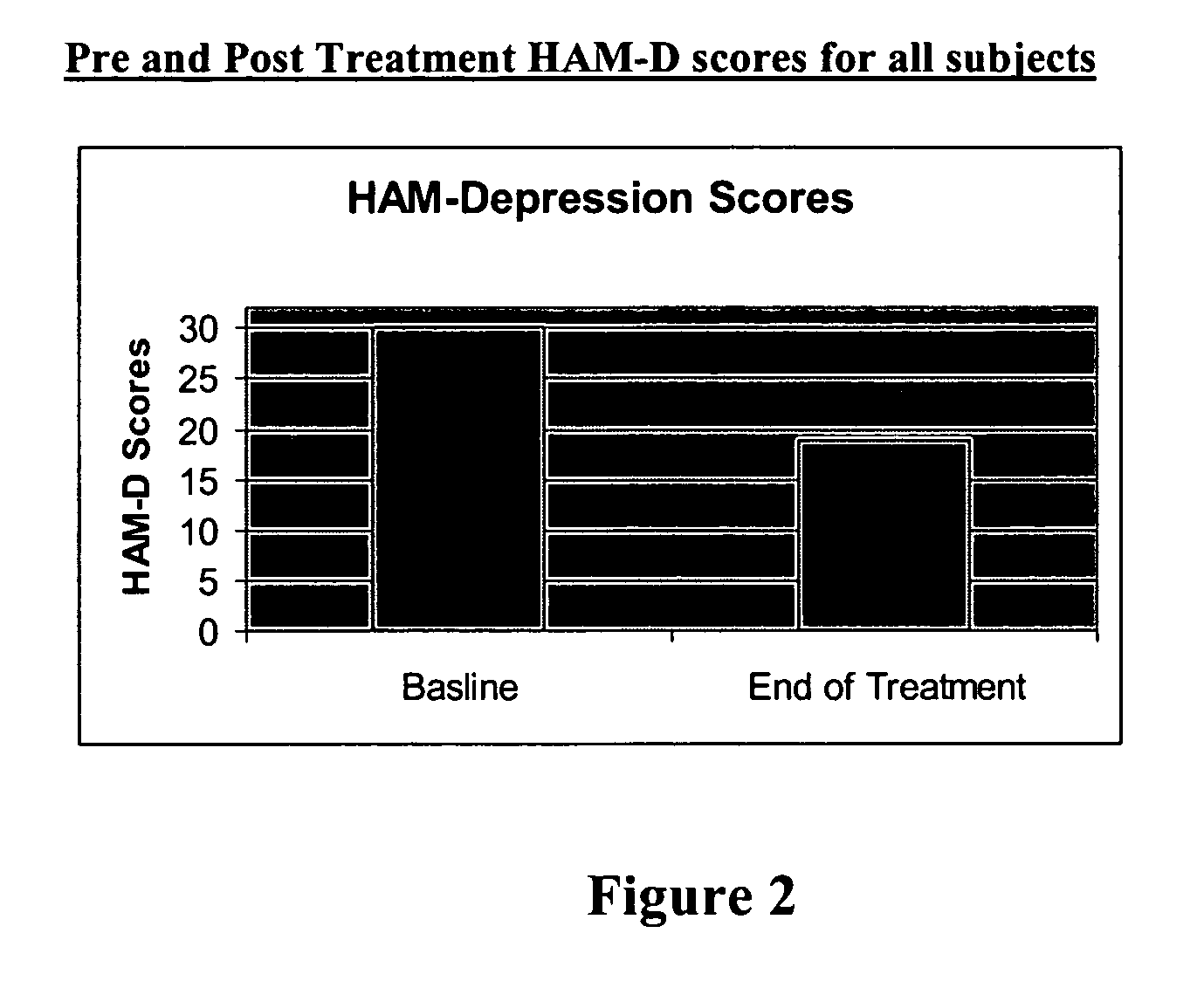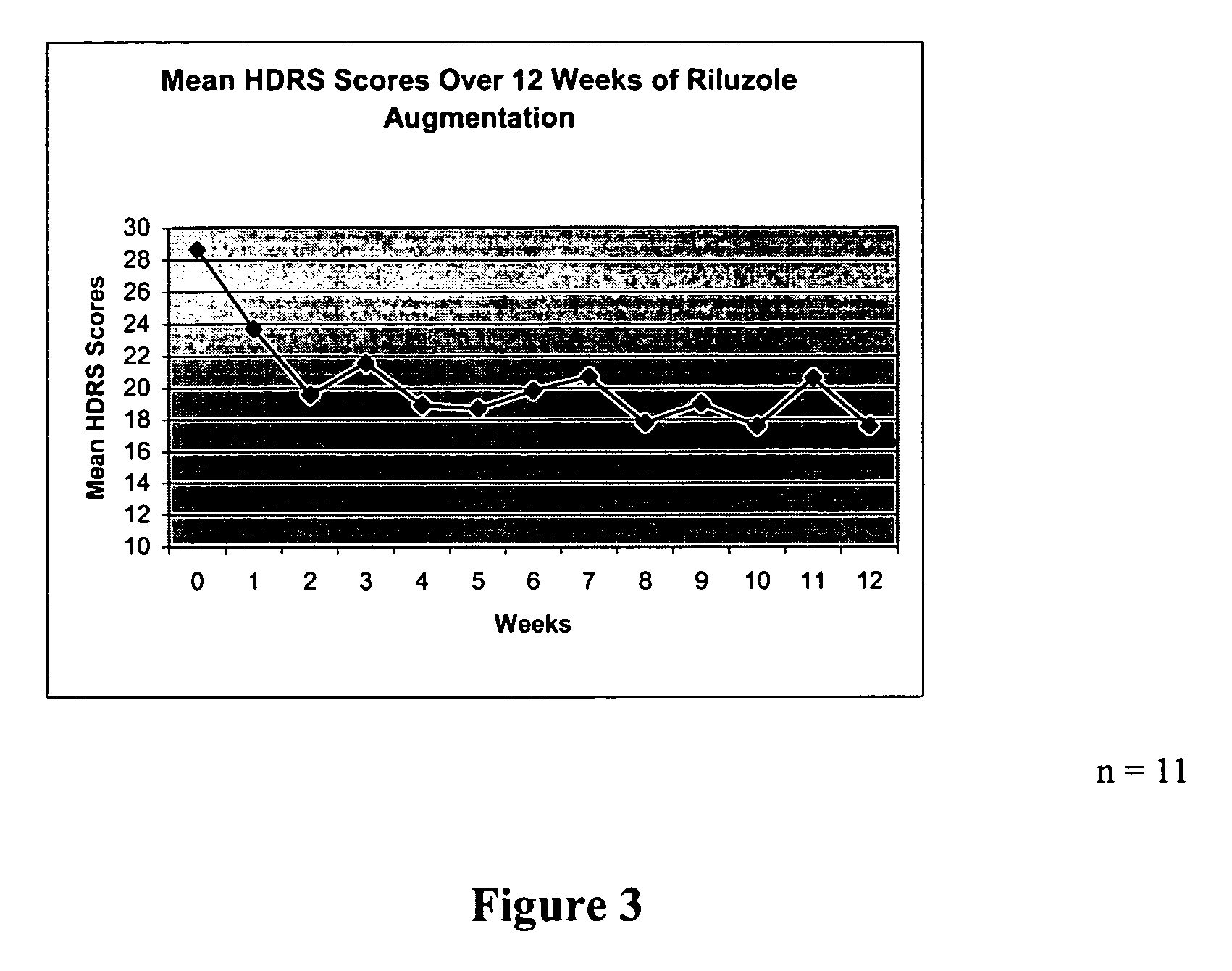Glutamate agents in the treatment of mental disorders
a technology for mental disorders and glutamate, applied in the field of glutamate agents in the treatment of mental disorders, can solve the problems of affecting the normal functioning of individuals, prone to flare-up, and affecting the relief of symptoms of subsets, so as to enhance, or potentiate the uptake of glutamate by glia, improve the effect of glial glutamate uptake, and reduce glutamate hyperactivity
- Summary
- Abstract
- Description
- Claims
- Application Information
AI Technical Summary
Benefits of technology
Problems solved by technology
Method used
Image
Examples
example 1
Riluzole Augmentation in Treatment-Resistant Obsessive-Compulsive Disorder
Methods and Materials
[0066]Thirteen patients were recruited from the Yale OCD Research Clinic. Patient characteristics and inpatient / outpatient status are listed in Table 1. All patients provided written informed consent prior to study participation. The study was approved by the Yale University Human Investigations Committee, New Haven, Conn. Patients between the ages 18 and 65 with a primary DSM-IV diagnosis of OCD who had failed to clinically respond to at least eight weeks of treatment with SRIs were eligible for study participation. Treatment failure was defined by a Yale-Brown Obsessive Compulsive Scale (Y-BOCS) score >16 despite at least eight weeks of treatment with the maximum tolerated dose of an SRI medication. Additionally, OCD symptoms had to be present for at least one year and at least of moderate severity on the Clinical Global Impression Scale severity of illness item. Patients with a primary ...
example 2
Use of Glutamate Modulating Agents for Treatment of Anxiety Disorders and Trichotillomania
Anxiety Disorders
[0080]A study of thirteen patients with anxiety and mood symptoms was undertaken. Patients' baseline anxiety was measured using the Hamilton Anxiety Scale (HAM-A). The HAM-A is a rating scale developed to quantify the severity of anxiety symptomatology, often used in psychotropic drug evaluation. It consists of 14 items, each defined by a series of symptoms. Each item is rated on a 5-point scale, ranging from 0 (not present) to 4 (severe). Patients were then treated with Riluzole, a glutamate modulating agent, and HAM-D was followed weekly.
[0081]Methods. Thirteen patients between 18-65 years with anxiety symptoms were treated with the addition of riluzole to their existing pharmacotherapy. Hamilton Anxiety Inventory (HAM-A) scores were obtained weekly.
[0082]Results: Thirteen study participants received Riluzole 50 mg twice a day. HAM-A scores for the group significantly improve...
example 3
Beneficial Effects of the Antiglutamatergic Agent Riluzole in a Patient Diagnosed with Trichotillomania
[0087]Trichotillomania (TTM) is an impulse-control disorder characterized by compulsive hair-pulling. While the incidence of hair-pulling is quite high in some populations, full criteria for TTM are met by less than 1% of the population (Christensen et al., J. Clin. Psychiatry 52(10):415-7, 1991; King et al., J. Am. Acad. Child Adolesc. Psychiatry 38(12):1470-1, 1995; Walsh and McDougle, Expert Opin. Pharmacother. 6(6):975-84, 2005). Severe cases can lead to bald patches and marked social disability. Although TTM is categorized as an impulse-control disorder, some clinicians conceptualize TTM as being part of a spectrum of disorders characterized by compulsive behavior, including obsessive-compulsive disorder (OCD) and Tourette's syndrome. The hypothesis that TTM and OCD are etiologically related is largely based upon phenomenological similarity, high levels of comorbidity, and an ...
PUM
| Property | Measurement | Unit |
|---|---|---|
| time | aaaaa | aaaaa |
| time | aaaaa | aaaaa |
| immobility time | aaaaa | aaaaa |
Abstract
Description
Claims
Application Information
 Login to View More
Login to View More - R&D
- Intellectual Property
- Life Sciences
- Materials
- Tech Scout
- Unparalleled Data Quality
- Higher Quality Content
- 60% Fewer Hallucinations
Browse by: Latest US Patents, China's latest patents, Technical Efficacy Thesaurus, Application Domain, Technology Topic, Popular Technical Reports.
© 2025 PatSnap. All rights reserved.Legal|Privacy policy|Modern Slavery Act Transparency Statement|Sitemap|About US| Contact US: help@patsnap.com



